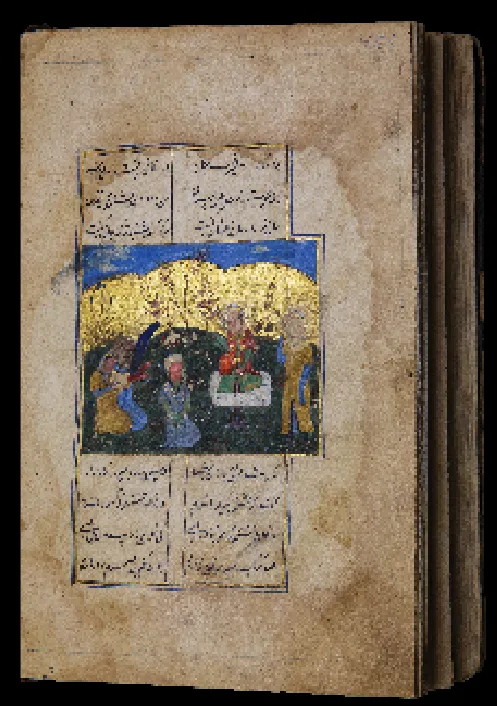
For a long time, art historians had considered them as provincial imitations of the miniature art of Timurid Herat. Now the recognition of importance of the creativity of Central Asian miniaturists is beyond dispute. Originally the school was known as “Bukhara”, but later miniatures created in Samarkand and Tashkent (Shahruhiya) were discovered. Although the leading role did belong to court artisans from Bukhara, the capital of the Shaybanid and Ashtarkhanid khanates, it is more correctly called the “Mawarannahr school.”
In the first half of the 16th century the connection of the Mawarannahr school with a group of the Herat miniaturists raised on the artistic principles of the great Kamoliddin Behzad is indisputable. But this connection was unidirectional and conditional mainly on the influx of the Herat miniaturists, who escaped to Central Asia from the terror of the fanatic qizilbashs who became numerous and active in Herat during the campaign of Shah Ismail. These newly arrived artists, as well their local colleagues following the style of the Herat school, continued to develop and refine the romantic style of Behzad with its fine drawing, bright coloring, merging of person and nature, characters and typical landscapes.
Under the influence of the Herat artists the scenes with a few (sometimes two) characters against the background of flowering glades, golden hills and blue sky became common in small poetic anthologies. Two miniatures in the manuscript Inventory No. 11791 by Fariduddin Attar “Mantiq al-tair” exemplify this well. They both are finely drawn, but rather standard in style. There are similar works among the miniatures of the Bukhara school of the 16th century, but none of them is an exact imitation.
You can learn more about this topic in the book-album “The Collection of the Al-Biruni Institute of Oriental studies, the Academy of Sciences of the Republic of Uzbekistan” (part five, “Miniature and Calligraphy”) (Volume XXV) from the series "The Cultural Legacy of Uzbekistan".
The main sponsor of the project is the oilfield services company Eriell-Group.
